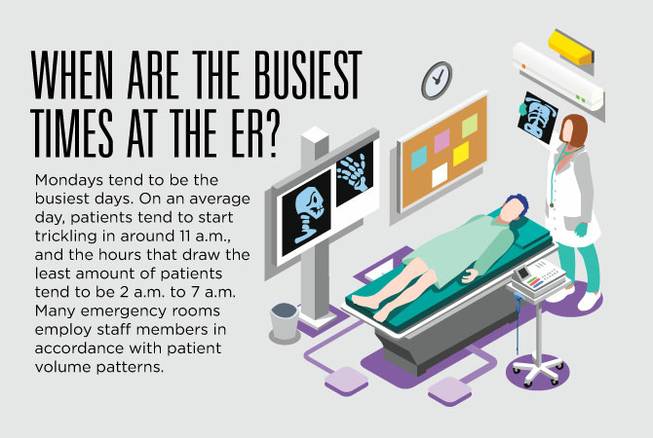
Sunday, Feb. 7, 2016 | 2 a.m.
For most of us who have been patients at the emergency room, our focus has been on receiving quick, quality care so we can leave as soon as possible. Most people don’t focus on the complicated, high-stakes world of emergency medicine.
Josh Hedden, ED Director, and Dr. Clarence Dunagan, ED Medical Director and MountainView Chief of Staff, share some behind-the-scenes information about how an emergency room works.
What makes the ER different from other departments in the hospital?
Emergency medicine is unlike other medical specialties because of the vast range of patients, illnesses and injuries. “You truly have to know at least a little bit about everything — you can have a 2-day-old baby come in one second, followed by a 101-year-old grandmother the next,” Dunagan said.
Because emergency rooms see everything from heart attacks to simple but unexplained aches and pains, a carefully coordinated effort by all members of the ER staff is required to ensure patients are getting proper care. “All ER nurses and physicians are trained to deal with all the variances present in the ER. They are able to adapt and prioritize if something more urgent comes in,” Hedden said. From registration to discharge, everyone working in the emergency room is trained to expect, and respond to, the unexpected.
Who works in the ER?
Still a relatively new specialty (training programs began in the 1970s), emergency medicine has grown significantly in the past 40 years. “It’s become a very popular specialty for doctors because it attracts someone who can deal with high-pressure situations in a timely manner, but also someone who can shift gears and do a lot of primary care, as well,” Dunagan said. He also noted that emergency medicine constantly evolves as medical technology does, with new advances giving practitioners more efficient ways to do their job.
What happens when I go to the ER?
Many emergency rooms will see hundreds of patients a day, so keeping incoming and outgoing patients organized and getting patients seen promptly can be tricky.
ERs prioritize the order in which incoming patients are treated based on the severity of their condition. “A simple cold or laceration will not go ahead of a patient suffering from a stroke or a heart attack. We try our best to be respectful of patients’ time, but we must prioritize by severity to ensure the safety of all our patients,” Hedden said.
1. Condition is assessed
When a patient arrives at the ER, the first thing he or she does is check in and receive an initial assessment, often called triage. At some ERs, triage takes place in a designated area of the lobby or within designated triage rooms. “At our ER, we have physician’s assistants or nurse practitioners who greet patients in the lobby as they come in and get their treatment started,” Hedden said.
This could mean ordering preliminary tests or lab work, counseling the patient on his or her condition and/or escalating the patient’s care immediately. It is during the triage process that the severity of the patient’s condition is evaluated.
2. Patients must register
Once triage has been completed, patients will register — an important step for helping streamline relevant medical information and billing — before being seen by a physician. Depending on the severity of the patient’s condition, he or she will either be seen right away or will have to wait until a doctor is available.
3. Patients see a doctor
“On a busy day, one doctor might be caring for up to 12 patients simultaneously, so it can require lots of multitasking. There is an incredible amount of objective data to sort through and interpret, such as CT scans, lab results, EKGs, X-rays, ultrasounds and previous medical records,” Dunagan said.
To help process the patient’s medical information and gather all the necessary relevant data, some ERs use scribes to help free up the doctors’ time, allowing them to spend the majority of their time with patients.
Is the ER as dramatic as it seems in movies and TV?
The emergency room can be hectic, chaotic and intense, but most patients going to the ER will be able to walk out that day. “The vast majority of the patients we see have very low-acuity complaints. At MountainView, we admit about a quarter of ER patients, which means that almost three quarters of everyone who comes to the ER are well enough to go home after their evaluation and treatment,” Dunagan said.
When are the busiest times?
Mondays tend to be the busiest days at the ER, Hedden said. On an average day, patients tend to start trickling in around 11 a.m., and the hours that draw the least amount of patients tend to be 2 a.m. to 7 a.m. Many emergency rooms employ staff members in accordance with patient volume patterns.

Join the Discussion:
Check this out for a full explanation of our conversion to the LiveFyre commenting system and instructions on how to sign up for an account.
Full comments policy